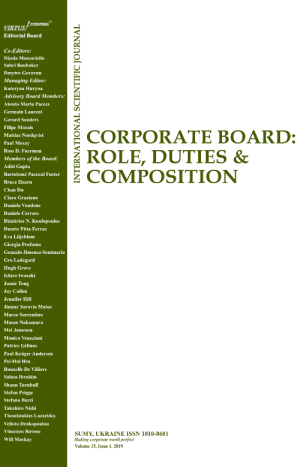
INCLUDED, BUT STILL NOT EQUAL? GENDER SEGREGATION AT QUOTA REGULATED BOARDS
Download This ArticleAbstract
In 2003 Norway introduced a new regulation that required at least 40 percent of each gender on company boards. Norway was the first country in the world to introduce such a law, but several countries have since proposed similar arrangements. Before the reform, opponents of the law in Norway claimed that the new women directors would not be allowed to participate fully in board decision-making. Instead, their role would only be window dressing. Based on a questionnaire sent to all directors in public limited companies in 2009, the article studies this allegation. Results show that women directors report less ability to influence board decision making than men directors. Moreover, women to a lesser extent feel they are part of the inner circle on boards where such phenomena is perceived to exist. These tendencies also hold when we control for many other independent variables such as board role, ownership interest, number of directorships, and occupation, among others. Hence, the quota regulated boards might show tendencies of gender hierarchies and resegregation.
Keywords: Board role, gender, influence, quota regulation, decision-making
How to cite this paper: Storvik, A., & Gulbrandsen, T. (2016). Included, but still not equal? Gender segregation at quota regulated boards. Corporate Board: role, duties and composition, 12(2), 35-45. https://doi.org/10.22495/cbv12i2art5



















